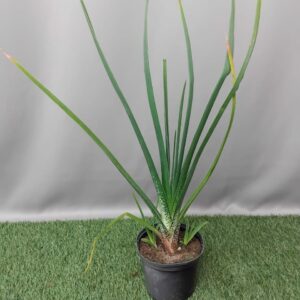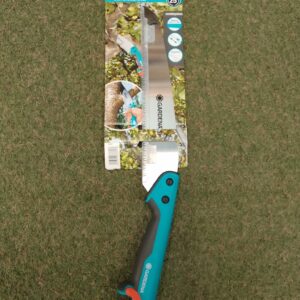Agapanthus – all you need to know
DIY and how-to

Agapanthus: A full guide
Agapanthus plants line so many roads in South Africa that we tend to forget just how spectacular these plants are. Thanks to clever breeding programmes these indigenous treasures are now available in a wide range of striking varieties.
The Agapanthus is undoubtedly one of our indigenous botanical treasures. It has been exported to all corners of the earth, but occurs naturally only in southern Africa, where it grows in the wild in all our provinces except the Northern Cape, as well as in Lesotho, Swaziland and Mozambique.
The name agapanthus comes from the Greek words agapé (love) and anthos (flower), therefore literally meaning “flower of love”. Locally it is often referred to as blue lily, isicakathi (Xhosa) and ubani (Zulu), while in Europe and America it is popularly known as the African lily.
The Agapanthus is used in many traditional rituals and remedies in southern Africa. Xhosa women make a necklace from the roots of the plant to ensure healthy, strong babies, the Zulu use the plant to treat heart disease and paralysis, and it is said to revive the tired and swollen feet of hikers who wrap their feet in the leaves for half an hour. In fact, scientific studies have revealed that agapanthus does contain several chemical compounds with anti-inflammatory properties.
Agapanthus produce large clusters (known as umbrels) of funnel-shaped flowers at the end of a tall stem. The colour of Agapanthus flowers range from the well-known blue-purple hues to white, and even pink varieties, and the plants range in height from just 20cm for certain dwarf varieties to up to 2m for larger varieties. They make excellent cut flowers and will last for up to 10 days in a vase of water, although the darker coloured varieties tend to fade when brought indoors.
Types of Agapanthus
The Agapanthus family includes two evergreen species, namely Agapanthus africanus and Agapanthus praecox, and four deciduous species – Agapanthus campanulatus, Agapanthus caulescens, Agapanthus coddii and Agapanthus inapertus. The evergreen species are indigenous to the winter rainfall areas of our country, while the deciduous species hail from the summer rainfall areas of southern Africa. Breeding programmes have given rise to a wide variety of exciting dwarf and medium high Agapanthus with large blooms.
Here are a few of our favourite varieties :
- Agapanthus Praecox “Blue Ice” bears flowers with a dark blue base which fades to pure white on the outside. They are clump forming and grow to 115cm in height. This variety flowers in early to mid summer.
- Agapanthus Praecox “White’” is a large variety which flowers in early summer, producing large white flowers on top of tall stems.
- Agapanthus “White Ice” is a medium height variety with waxy white flowers which bloom from spring until the end of summer.
- Agapanthus Africanus “Double Diamond” is an attractive dwarf variety with clear white double flowers with yellow stamens. It is a prolific flowerer and is ideal for landscaping, containers or as a border plant.
- Agapanthus “Amethyst” is a dwarf variety with pale lilac flowers featuring a darker “amethyst” stripe running along the centre of each petal.
- Agapanthus Africanus “Peter Pan” is an evergreen agapanthus that grows to a height of approximately 50cm and produces very large sky blue flowers in late summer.
- Agapanthus “Snowball” is a dwarf variety, growing no taller than 30cm, with large white flowers on a thick stem.
- Agapanthus “Storms River” is an evergreen variety which flowers in the middle of summer, producing pale blue flowers. The plants are robust and have broad, strap-like leaves
- Agapanthus “Purple Cloud” is widely acknowledged as one of the most attractive varieties. It grows to a height of approximately 130cm and produces large purple-blue flowers
- Agapanthus “Selma Bock” is a late-flowering evergreen variety which produces beautiful white flowers with a blue throat. It is a robust plant with dark green leaves.
- Agapanthus “Lilac Flash” is a medium height variety which produces pretty lilac flowers in mid-summer. It tolerates light shade.
Where to plant Agapanthus
Agapanthus is a very undemanding plant which can withstand periods of drought very well due to its thick, fleshy roots where it stores water and food. However, they will thrive if planted in full sun in rich, well drained soil with plenty of compost. The larger varieties work very well when planted en masse at the back of garden beds, while the smaller varieties work well as an edging plant and in rockeries. Agapanthus praecox also helps to prevent soil erosion on banks in your garden and they fare well in seaside gardens as they are not susceptible to the strong winds and salty air in these settings.
Basic care of Agapanthus
- Water agapanthus deeply once a week during spring and summer (twice a week if the weather is very hot and dry).
- Feed agapanthus once every two weeks during spring and early summer with a balanced slow release fertiliser like 3:1:5.
- In very cold areas, protect agapanthus rhizomes from frost by applying a thick layer of straw or dry sand around the plants before winter. Remove this layer in spring when plants begin to grow again.
- Lift and divide (see “Lift and divide”) evergreen varieties once every four years to encourage maximum flowering.
- Removed faded flower heads to prevent the plants from self-seeding and taking over your garden.
Lift and divide Agapanthus
Regular division of agapanthus clumps is essential to ensure that your plants continue to flower well. The best time to lift and divide agapanthus is late March after they have finished flowering. Evergreen varieties should be divided once every four years, while deciduous types fare better if divided once every six years.
Use a garden fork to prise agapanthus clumps out of the soil. Divide the clump into three pieces using the sharp end of a garden spade. Discard the central piece and replant the two outside pieces after cutting back the foliage by half and trimming the roots to two thirds of their length. Replant in well composted soil and water well.
Planting Guide for Agapanthus
| Month | Planting | Transplanting | Flowering | Pruning | Fertilising |
| January | X | X | X | X | |
| February | X | X | X | X | |
| March | X | X | X | ||
| April | X | X | |||
| May | X | X | |||
| June | X | X | |||
| July | |||||
| August | X | ||||
| September | X | X | X | ||
| October | X | X | X | ||
| November | X | X | X | ||
| December | X | X | X |
Trouble-shooting problems with Agapanthus
Agapanthus plants are generally fairly resistant to pests and diseases. However, they can be susceptible to the following conditions:
- Brown marks on the unopened flowers are a sign of botrytis rot, a fungal disease. Botrytis can be treated by spraying the buds with fungicide before and after they have opened.
- Die-back of the leaves from the tip to the base can be caused by a fungus known as Macrophoma agapanthii. This fungus can be treated by spraying the entire plant with fungicide.
- Snails love to shelter in the leaves of agapanthus plants. Fortunately they don’t cause much damage to the plants and are best dealt with by picking them off by hand when you spot them.
- Yellow leaf tips indicate overwatering or waterlogged soil. You can rectify this by adding extra organic matter, like compost or bark chips, to the soil.
- Numerous cases involving the die-back of large numbers of agapanthus plants have recently been reported in the Western Cape. It is believed that this is caused by an as yet unidentified worm which bores down the stem of the plant and subsequently eats the rhizome. The worm is spotted and has a red head. The best way to confirm such an infestation if your plants start to die back is to dig into the rhizome to look for signs of the parasitic worm. To prevent attacks from this worm, clear away any faded leaves and debris from the plant regularly and feed well with a foliar feed in spring.
Did you know? – Agapanthus plants were an immediate favourite with European arrivals to our country – they were first exported from Africa to Europe as early as the end of the 17th century.
Links with Agapanthus:
You can find more on Agapathus on these websites:
- Agapanthus praecox on plantzafrica.com
- Agapanthus on Wikipedia
- Grow-Agapanthus on wikihow.com
You might also like
Shop online
-
ALOE COOPERI 15CM
- R119.99
- Add to cart Learn More
-
PLASTIC POT CAMPANA BELL ANTHRACITE 15CM – 32CM
- R39.99 – R299.99
- Select options This product has multiple variants. The options may be chosen on the product page Learn More




